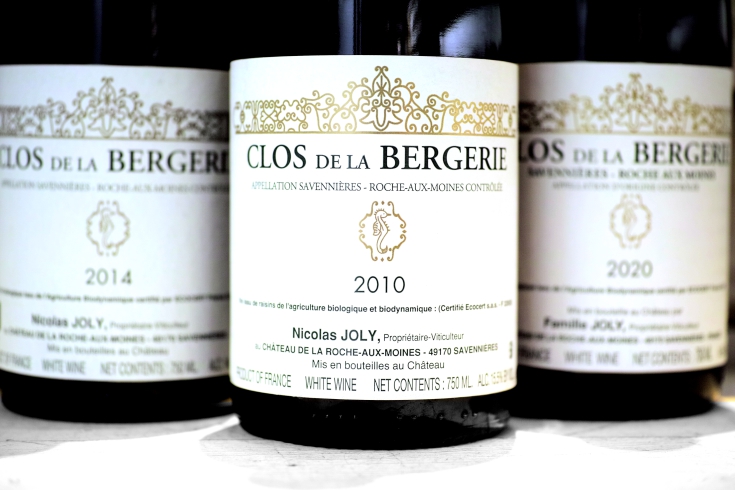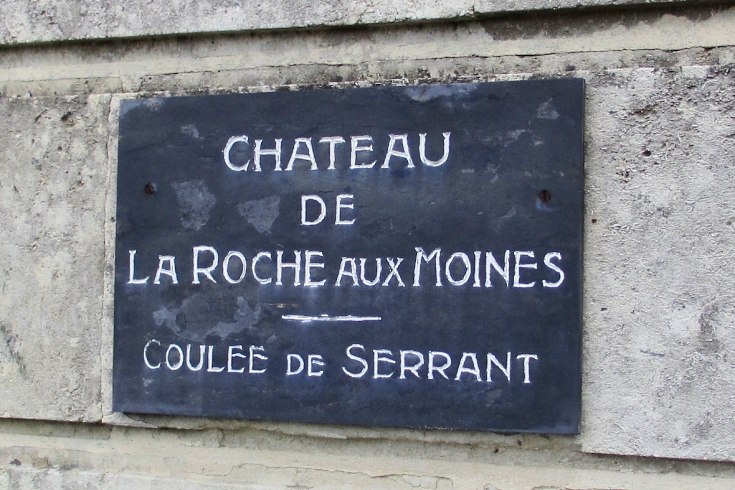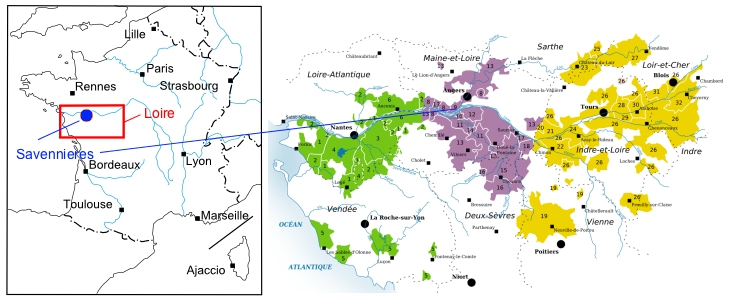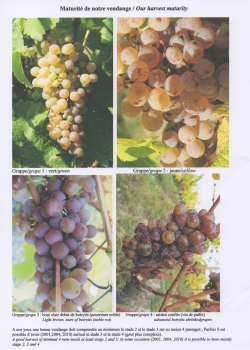 |
 |
 |
 |
Clos de la Bergerie
Clos de la Bergerie shares the same style as Coulée de Serrant and Vieux Clos, also containing botrytis. Among the three cuvées, Clos de la Bergerie is the richest, with a honey-like sweetness. Its full-bodied texture coats the mouth seductively, offering a sweet and long finish. This decadently luscious flavor can be said to embody the very essence of French aestheticism.
Clos de la Bergerie belongs to the appellation Savennières Roche aux Moines. The average age of the vines is approximately 35 years. The soil, also composed of schist, is slightly thicker (approximately 30 to 80 cm). Yields are 25-30 hl/ha. The slopes, less steep than those of Coulée de Serrant, face east. Winemaking is done in oak barrels (never more than 5% new wood) and produces approximately 8,000-10,000 bottles per year.
The quality of the wine is primarily determined before harvest. The winery should be viewed as a maternity ward, never a factory. The winemaking process remains simple, with certain practices such as lees stirring (bâtonnage), aromatic additions, and reverse osmosis being avoided. The wines are primarily stored in old underground cellars or in the castle's basement.
Savennières Roche aux Moines
As you may know, while Coulée de Serrant is an AOC exclusively owned by Nicolas Joly, a portion of the same property is also composed of Savennières Roche aux Moines, which is the vineyard located in front of the château.
Savennières Roche aux Moines became an independent Appellation Contrôlée in 2011, separating it from the broader Savennières appellation. It is one of the smallest mainstream appellations in the Loire Valley, with about 35 hectares eligible for the appellation, but a significant portion remains unplanted. The appellation is divided among approximately 7-12 different proprietors, with 7-8 active producers. The appellation rules include restrictions such as banning chemical herbicides, requiring hand harvesting, and setting a maximum yield of 30 hl/ha.

The Domaine
Coulée de Serrant is the finest biodynamic vineyards in the world. It has fascinated many talented great producers, such as Lalou Bize-Leroy and Anne-Claude Leflaive. Coulée de Serrant is a "Monopole AOC" that is able to find only few cases, for example Romanée-Conti and Chateau Grillet. This unique vineyard produces unique wine which is made from 100% Chenin Blanc with botrytis.
Nicolas Joly started Biodynamic farming in 1980. In 1985 or 1986(according to his memory), Lalou Bize-Leroy visited Coulée de Serrant and she understood everything in a moment. Then, she decided to implement biodynamie to her vineyards called "Domaine Leroy". After a while(late 80's), Anne-Claude Leflaive visited Coulée de Serrant and she was deeply inspired - maybe you know the rest of the story. All of these today's finest and natural wines would not have existed without Nicolas Joly's pursuit of truth and its great achievement. After over 40 years management of biodynamie, this vineyard is well-conditioned to express its terroir perfectly. Now this "Monopole AOC" is able to show its maximum potential.
If you stand in this vineyard, you can feel large and deep vibrations. You may understand everything in a moment like Lalou Bize-Leroy. However, it is not necessary to go there because all the elements are perfectly transferred to three wines - Coulée de Serrant, Clos de la Bergerie and Les Vieux Clos - and delivered to your table. Drinking is much more important.


|
Maturity of grape harvest
It is important to show the customers the impact of grape maturity on the taste of the wine. We harvest late on purpose to gain complexity, linked with a beginning of over maturity. What we call a sort of oxidation on the the grape is different from oxidation linked to a bad cellar management.
On the pictures herewith, with 4 harvest on each parcels (link to a real massal selection and no clones on the estate) we never harvest pict 1, but pic 2 and 3 and sometimes a bit of pic 4. This doesn't affect the ageing capacity of our wines. (Nicolas Joly June 2013)
|

|
Natural wine - the wine like fresh fruits
Indeed, the taste of Nicolas Joly wines are always different. Many people are thinking that it's a bottle variation, or wines are unstable.
However, please imagine fresh fruits and canned fruits. Nicolas Joly's wine(and other good natural wines) are much closer to fresh fruits. As fresh fruits is changing every moment and affected by environment, Nicolas Joly's wine is alive in the bottle and perform differently every season, every day and every time zone, rather than bottle variation. On the other hand, most wines which are distributed widely are produced as preserved food such as canned pineapple. Its taste is the same every day(stable and homogenised) and gets older slowly.
Do not confuse oxidation with maturity
Chenin gets its complexity only when it is fully ripe – deep yellow. And only healthy, sustainable farming can guarantee this without grey rot. For this reason, all our grapes are picked in four or five passes as each parcel begins to raisin and form botrytis - thereby allowing the mineral flavours of Chenin to achieve their fullest intensity.
Once uncorked, wines made in this way continue to improve – and are in no way oxidised. To be sure that the colour is not oxidation you can make the test yourself by tasting a glass over several days without putting the bottle in the fridge just recork. You will see the wine develops for several days and sometimes over more than a week.
If the wine becomes oxidised it would be undrinkable.Our wines go well with white meat in sauce, fish with beurre blanc or even simply with a good cheese like goat cheese or Cantal. Uncork few hours in advance or carafe the wine. Serve at 14°C / 57°F. (by Nicolas Joly)
Organic Wine Journal interviewed Nicolas Joly
Grapes & Grains: Nicolas Joly, Man of the Earth by Katherine Bryant
|
|
 |
 |
 |
 |

|